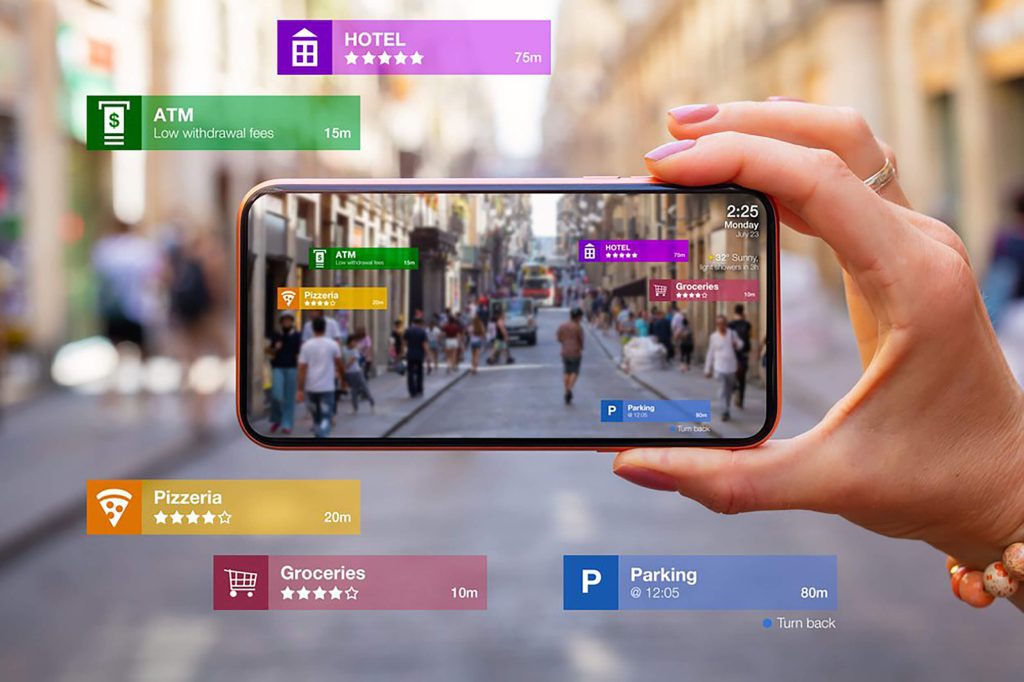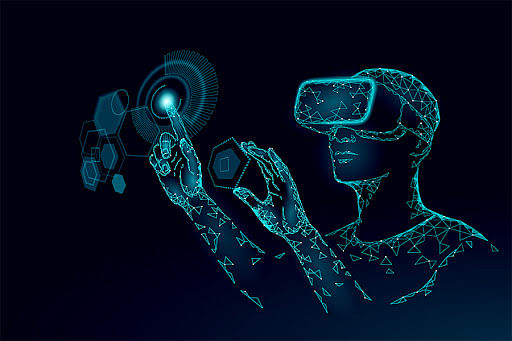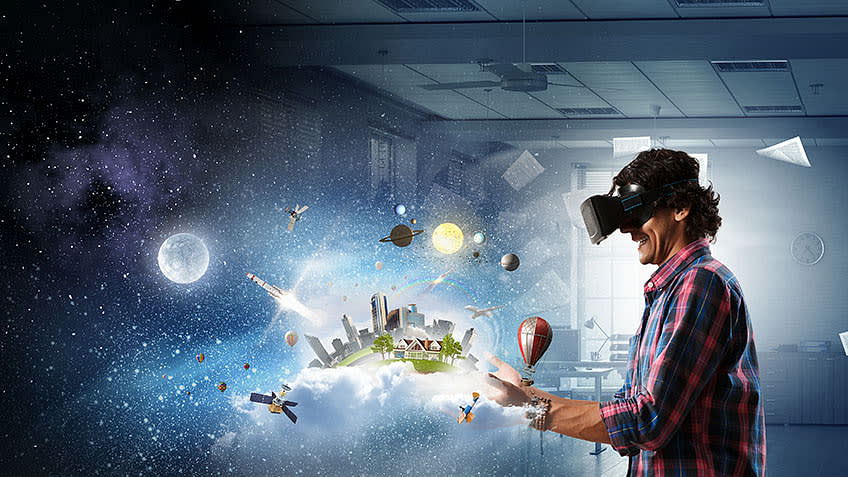Extended reality (XR) is an umbrella term to refer to augmented reality (AR), virtual reality (VR), and mixed reality (MR). The technology is intended to combine or mirror the physical world with a “digital twin world” able to interact with it [1] [2], giving users an immersive experience by being in a virtual or augmented environment. The fields of virtual reality and augmented reality are rapidly growing and being applied in a wide range of areas such as entertainment, cinema, marketing, real estate, training, education, maintenance [3], and remote work.[4] Extended reality can be used for joint effort in the workplace, training, educational purposes, treatments, and data exploration and analysis.
Some Major Types of Extended Reality are Explained Below :
1) Augmented reality (AR)
In augmented reality, virtual information and objects are overlaid in the real world. This experience enhances the real world with digital details such as images, text, and animation. You can access the experience through AR glasses or via screens, tablets, and smartphones. This means users are not isolated from the real world and can still interact and see what’s going on in front of them. The most well-known examples of AR are the Pokémon GO game that overlays digital creatures in the real world or Snapchat filters that put digital objects such as hats or glasses onto your head. For more Visit

2) Virtual Reality (VR)
It is a “virtual world” created by attaching a dedicated “HMD (Head Mounted Display)” or goggle-type “VR goggles” to the face and stimulating the visual and auditory senses with images and sounds,. It is a technology that can give you the illusion of being truly there, and an experience that is equivalent to reality. The brain processes information obtained from the five senses to obtain sensations, but it is said that most of the information is obtained from sight and hearing, and it also interacts with other senses. By stimulating sight and hearing, the brain can complement other senses and create illusions and sensations. The more deeply users can immerse themselves in a VR environment — and block out their physical surroundings — the more they can suspend their belief and accept it as real, even if it’s fantastical. For more Visit here

3) Mixed Reality (MR)
MR recognizes the shape of real space (spatial mapping) and projects a hologram, which is a virtual object, onto a display to visualize it in real space. refers to technology. Spatial mapping is a function that uses a device’s camera or sensor to scan the real space in 3D and recognize the shapes and distances of floors, walls, desks, etc. in three dimensions. MR is a technology that combines reality and virtual reality and is translated as “mixed reality” in Japan. An example of MR is a service that turns a car into a virtual object and displays it in real space, reproduces the car in the same size as the real car, allows you to view the exterior from any viewpoint, and allows you to open the door and check the inside of the car. may be mentioned. In this way, it is now possible to use MR technology to provide experiences that could only be provided using the real thing in the past. For More Visit Here

Challenges of Extended Reality
Those developing XR technologies are battling with some of the challenges to mainstream adoption. First, XR technologies collect and process huge amounts of very detailed and personal data about what you do, what you look at, and even your emotions at any given time, which has to be protected. In addition, the cost of implementing the technology needs to come down; otherwise, many companies will be unable to invest in it. The wearable devices that allow a full XR experience must be fashionable and comfortable, as well as always connected, intelligent, and immersive. There are significant technical and hardware issues to solve that include but are not limited to the display, power and thermal, motion tracking, connectivity,, and common illumination—where virtual objects in the real world are indistinguishable from real objects, especially as lighting shifts.
In other words, XR does not denote a specific type of technology and can be used to refer to any technology within the three branches. As an example, this means that solutions like Help Lightning’s remote visual guidance software (an Augmented Reality technology) can be referred to as XR and/or AR, but not VR. As we continue to explore the intersection of our physical reality with the digital landscape, one thing is clear – extended reality solutions are not just shaping our future, they’re defining it.
❤️ If you liked the article, like and subscribe to my channel, “Securnerd”.
👍 If you have any questions or if I would like to discuss the described hacking tools in more detail, then write in the comments. Your opinion is very important to me! at last of post